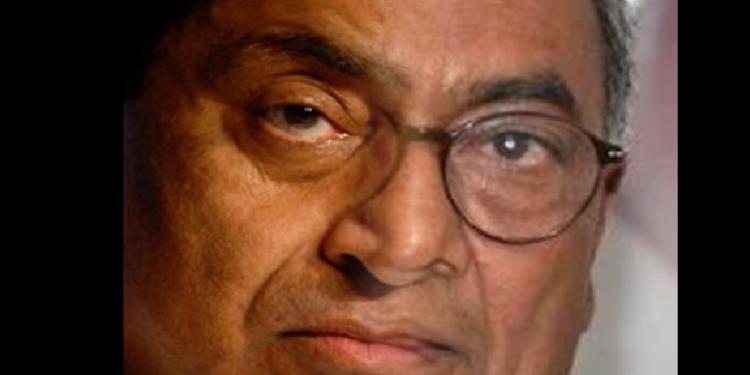With the Congress coming back to power in Madhya Pradesh after 15 years of exile, it seems that the Congress government in Madhya Pradesh is nothing but Digvijay Singh 2.0. The incumbent CM Kamal Nath has appointed the number of Digvijay Singh era ministers in his state cabinet ministry. Bala Bachchan, Govind Singh Rajput, Viaylaxmi Sadho, Hukum Singh Karada, Arif Aqueel, and Sajjan Singh Verma were ministers in Digvijay Singh Cabinet and now they have also got berths in Kamal Nath’s cabinet. Digvijay Singh’s son, Jaiwardhan Singh got urban administration and housing.
Apart from the few faces of Digvijay Singh era who have got berths in the Kamal Nath cabinet, there are many other similarities to the Digvijay Singh’s government that had become an object of derision of the people.
The first commonality between the then Digvijay Singh era and the present Kamal Nath era is the rampant infighting and factionalism. It would be safe to say that although Congress won the crucial Madhya Pradesh state assembly elections, the factionalism and infighting within the party has not gone anywhere. The factions are still there just waiting for their chance. Much like the trio of Madhavrav, Subhash Yadav and Arjun Singh was during the Digvijay reign. Factionalism is clearly evident in the allocation of portfolios. In the state cabinet, 10 supportive MLAs of CM Kamal Nath, 9 of Digvijay Singh, 7 of Jyotiraditya Scindia have been inducted. One MLA Sachin Yadav from Kasrawad constituency has also been inducted as a cabinet minister. He is the brother of former Union Minister of state, Arun Yadav. From the very beginning, Kamal Nath and Digvijay Singh seem to be working in tandem to outwit Scindia camp, and so far they are doing it successfully.
The next commonality is the challenger to the throne. In the Digvijay era, Subhash Yadav was portrayed as his arch rival and not without merit. Much like the present challenger to Kamal Nath, Jyotiraditya, Subhash was closer to the then party president Sitaram Kesari. This factionalism and a perpetual threat to the throne resulted in frequent cabinet re-shuffles during the Digvijay era. The ultimate victim of all this infighting and game of throne was- Madhya Pradesh. Leaders focused more on wresting political power than developing the state, and the Congress party paid the price of it. People of MP kicked out Congress party out of power for 15 long years. During his reign, Digvijay Singh had spent most of his time in fighting with the challenges within the party- Arjun Singh, Madhavrao Scindia, Shyama Charan, and Subhash Yadav. Many times, these challengers crossed sword with Digvijay Singh on many issues and state administration and governance suffered badly because of all this game of thrones within the party. Madhya Pradesh under Digvijay Singh’s rule gained the reputation of being the least developed state in the nation. Issues related to farmers and agriculture was largely ignored. In fact, the regime attacked farmers. In January 1998, under Digvijay Singh’s rule, police massacred 17 farmers at Multai.
There are many parallels in Digvijay Singh era and the present Kamal Nath government. Since there is a strong parallel, this government is no different.
The incumbent government of MP is also facing criticism over the issue of farmers and electricity. The newly elected Congress government in the state of Madhya Pradesh seems to be in deep trouble as it is facing a spate of problems, one after another. The first sign of crisis came right in the middle of the Rabi season as the state encountered a shortage of urea in several of the districts. Farmers in Guna and Raisen districts of Madhya Pradesh reportedly staged protests and blocked roads after cooperative societies ran out of urea.
The situation in the state over urea shortage has only worsened with the passage of time. During urea distribution on Monday in the Guna district, the police carried out a lathi charge on the protesting farmers. It is very disheartening that the local administration had to take such measures after the Congress came to power in the state after racking up the issue of farm distress in a big way.
However, this is not all, the farmers of Madhya Pradesh who already face urea shortage are now faced with another crisis in the form of potential power shortage in face of diminishing coal stocks in major power plants supplying power to the state.
In its initial days in the office, the Kamal Nath government has shown signs of mismanagement and bad governance. If the people of Madhya Pradesh thought that Kamal Nath would be different from the much hated Digvijay era, the signs so far do not bode well. So far, Kamal Nath has only offered low standards of administrative efficiency and poor governance in the state.


































